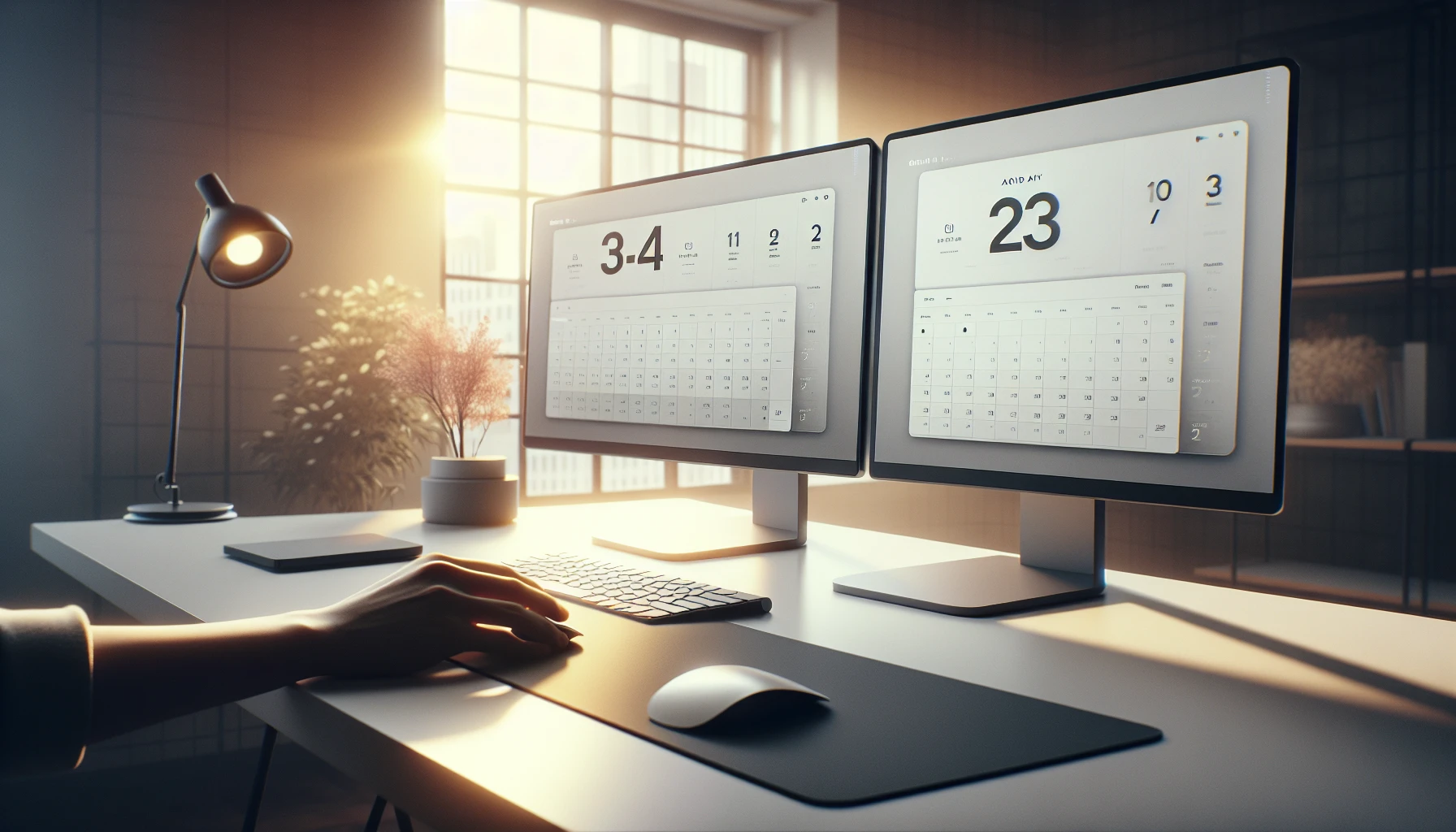· Ricardo Batista · 13 min read
Sample Example of Meeting Minutes Template
Explore the key elements of a meeting minutes template for effective communication and accountability.

Minutes are key records of talks, choices, & action points during gatherings. In this piece, we’ll look at an example of a meeting sample’s minutes. Getting the significance of well-documented meeting minutes is vital for good communication, responsibility, & productivity in any organization or group setting. Let’s dive into the specifics of making thorough meeting minutes.
Key Takeaways
- Meeting minutes are essential records of discussions, decisions, and action points during meetings.
- Understanding how to write effective meeting minutes is crucial for communication and accountability.
- Employing resources like Microsoft Word & meeting notes layouts can simplify the procedure of generating meeting records.
- Keeping meeting minutes concise by focusing on key points helps maintain clarity and relevance.
- Pursuing solid methods like utilizing layouts, getting ready prior to the gathering, & recording crucial data guarantees the adequacy of meeting notes.
Introduction to Meeting Minutes
What Are Meeting Minutes?
Minutes are written records of talks, choices, & action items from a gathering. They’re an official account capturing attendees, agenda points, key discussions, decisions made, & tasks given. Minutes ensure everyone understands & there’s a clear record of outcomes.
Importance of Meeting Minutes
Meeting notes are crucial for keeping good communication & responsibility inside an organization. Here are some key reasons why meeting records matter:
Documenting Stuff: Notes from gatherings give a past record of choices & moves, which could be checked later on. This is particularly handy for following development & making sure jobs get finished!
Responsibility: Through recording who’s in charge of particular jobs & choices, meeting notes assist keep folks liable. This makes certain everybody comprehends their duties & due dates.
Interaction: Gathering notes function as a sharing device, letting those who couldn’t be there know what was talked about & determined. This assists keep everybody updated and guarantees that no crucial info is overlooked.
Lawful Records: Sometimes, meeting notes could act as lawful records, giving proof of choices & actions taken by an organization. This is especially crucial for board meetings & other formal get-togethers.
To simplify the procedure of capturing gathering notes, contemplate utilizing instruments like Meeting Reminders. Meeting Alerts can assist you with dealing with your gatherings all the more proficiently by pinging participants when they are not appearing, saving you the issue of physically messaging them each time they are behind schedule. Just introduce the Google add-on in your Google Calendar, & let Meeting Alerts do the remainder.
For more detailed guidance on creating effective meeting minutes, you can refer to our meeting minutes notes template. This template provides a structured format that you can easily copy & paste, ensuring that you capture all the essential information during your meetings.
Key Components of Meeting Minutes
Basic Information
The first section of meeting minutes should include basic information about the meeting. This typically covers:
- Meeting Title: The name or purpose of the meeting.
- Date and Time: When the meeting took place.
- Location: The spot where the gathering occurred, whether it was an actual place or a virtual platform like Google Meet & Zoom.
- Organizer: The person who called the meeting.
Attendance
Documenting attendance is crucial for accountability and follow-up. This section should list:
- Attendees: Names of all participants present at the meeting.
- Absentees: Names of those who were invited but did not attend.
- Guests: Any additional people who attended the meeting, such as guest speakers or consultants.
Using tools like Meeting Reminders can assist guarantee that participants are there. Meeting Reminders notifies attendees when they aren’t appearing, saving you the hassle & effort of manually emailing them every time they’re tardy. Just install the Google add-on in your Google Calendar, & let Meeting Reminders take care of the remainder.
Agenda Items and Discussions
This section should outline the main topics discussed during the meeting. For each agenda item, include:
- Topic: The subject or issue being discussed.
- Presenter: The person leading the discussion on that topic.
- Key Points: A summary of the main points raised during the discussion.
For a structured approach, you can use a meeting minutes notes template to ensure you capture all necessary details.
Decisions and Action Items
The final section of the meeting minutes should focus on the outcomes of the meeting. This includes:
- Decisions Made: Any resolutions or agreements reached during the meeting.
- Action Items: Specific tasks assigned to individuals, including deadlines and responsible parties.
Noting choices & moves obviously assists guarantee that everybody comprehends their duties & due dates. This encourages responsibility. and helps follow advancement on different assignments.
For more tips on how to successfully record meeting notes, you can refer to our meeting notes templates. These templates offer a structured layout that you can effortlessly duplicate & paste, guaranteeing that you capture all the crucial details during your gatherings.
How to Write Effective Meeting Minutes
Preparation Before the Meeting
Effective meeting minutes start with thorough preparation. Here are some steps to take before the meeting:
- Look Over the Plan: Get acquainted with the gathering’s schedule to comprehend the subjects that’ll be talked about. This’ll assist you with foreseeing what should be recorded.
- Establish a Layout: Utilize a gathering notes layout to guarantee you record all crucial info. This outline could be tailored to suit the particular requirements of your meeting.
- Get Stuff: Obtain any papers or stuff that’ll get used during the gathering. This includes past gathering notes, reports, & presentations.
During the Meeting
During the meeting, focus on capturing key information accurately and concisely. Here are some tips:
- Record Basic Information: Start by noting the meeting title, date, time, location, and organizer.
- Record People There: Note down all individuals attending, missing, & any visitors around. Stuff like Meeting Reminders could assist making sure participants show by notifying them when they aren’t appearing.
- Seize Schedule Things & Talks: For every schedule thing, write down the subject, presenter, & main points talked about. Summarize the big ideas rather than writing out the whole chat.
- Note Choices & Tasks: Evidently write down any choices made & tasks given, involving due dates & accountable individuals.
Post-Meeting Follow-Up
After the meeting, it’s important to finalize and distribute the minutes promptly. Here are the steps to follow:
- Review and Edit: Review your notes for accuracy and completeness. Make any necessary edits to ensure clarity.
- Circulate Notes: Spread the completed gathering summaries with all participants & applicable parties involved. This could be accomplished through electronic mail or a mutual document system.
- Pursue Subsequent Moves: Guarantee that allocated duties are monitored & finalized. You could utilize resources like Meeting Prompts to dispatch notifications to liable individuals concerning their assignments & due dates.
For more detailed guidance on writing effective meeting minutes, you can refer to our meeting minutes templates. These templates provide a structured format that you can easily copy & paste, ensuring that you capture all the essential information during your meetings.
Examples of Meeting Minutes Templates
Simple Meeting Minutes Template
A straightforward gathering notes layout is perfect for casual or little crew get-togethers. It incorporates the fundamental components expected to catch fundamental data without overpowering detail. Here’s a fundamental construction:
- Meeting Title: [Title of the Meeting]
- Date and Time: [Date and Time]
- Location: [Location]
- Attendees: [List of Attendees]
- Agenda Items:
- [Item 1]
- [Item 2]
- Discussions:
- [Summary of Discussions]
- Decisions Made:
- [Decision 1]
- [Decision 2]
- Action Items:
- [Task 1] - [Responsible Person] - [Deadline]
For a ready-to-use template, you can refer to our meeting minutes notes template.
Board Meeting Minutes Template
Board meetings frequently necessitate a more official & thorough approach to minute-taking. This template incorporates sections for legal & compliance reasons:
- Meeting Title: [Board Meeting]
- Date and Time: [Date and Time]
- Location: [Location]
- Chairperson: [Name]
- Attendees: [List of Board Members]
- Absentees: [List of Absentees]
- Call to Order: [Time]
- Approval of Previous Minutes: [Summary]
- Reports:
- [Financial Report]
- [Committee Reports]
- Old Business:
- [Summary of Old Business]
- New Business:
- [Summary of New Business]
- Decisions Made:
- [Decision 1]
- [Decision 2]
- Action Items:
- [Task 1] - [Responsible Person] - [Deadline]
- Adjournment: [Time]
Project Meeting Minutes Template
Project meetings concentrate on monitoring advancement & tackling problems connected to particular endeavors. This outline assists in recording project-specific conversations & choices:
- Meeting Title: [Project Meeting]
- Date and Time: [Date and Time]
- Location: [Location]
- Project Name: [Name of the Project]
- Attendees: [List of Attendees]
- Project Status Update:
- [Summary of Current Status]
- Agenda Items:
- [Item 1]
- [Item 2]
- Discussions:
- [Summary of Discussions]
- Risks and Issues:
- [Identified Risks]
- [Issues Raised]
- Decisions Made:
- [Decision 1]
- [Decision 2]
- Action Items:
- [Task 1] - [Responsible Person] - [Deadline]
Using tools like Meeting Reminders could assist guarantee that all participants are there & on time. Meeting Alerts notifies attendees when they aren’t appearing, saving you the trouble of manually emailing them every time they’re tardy. Just install the Google add-on in your Google Calendar, & let Meeting Alerts take care of the remainder.
For more detailed templates, you can explore our meeting minutes templates. These templates provide a structured format that you can easily copy & paste, ensuring that you capture all the essential information during your gatherings.
Tools for Creating Meeting Minutes
Microsoft Word
Microsoft Word is a commonly utilized instrument for generating meeting records because of its adaptability & simplicity of usage. Here’s how to commence:
- Open Microsoft Word: Launch the application and create a new document.
- Utilize a Pattern: Microsoft Word provides diverse layouts for gathering notes. Navigate to
File > Fresh& search for “meeting notes” to discover an appropriate layout. - Modify the Layout: Complete the layout with your gathering specifics, incorporating the subject, date, period, participants, schedule things, conversations, choices, & action points.
For a more structured approach, you can refer to our meeting minutes notes template.
Google Docs
Google Docs is a great tool for collaborative meeting notes, letting multiple people edit the document at the same time. Here’s how to utilize it:
- Open Google Docs: Go to Google Docs and create a new document.
- Utilize a Pattern: Google Docs additionally provides layouts. Tap on
Template Collection& pick a “gathering notes” layout. - Distribute the File: Tap on the
Portionbutton to welcome helpers. This permits squad individuals to add to the notes throughout the gathering.
Using tools like Meeting Reminders can assist guarantee that all participants are there & on time. Meeting Reminders notifies attendees when they aren’t appearing, saving you the trouble of manually emailing them every time they’re tardy.
Notejoy
Notejoy is a cooperative notes application planned for squads, making it perfect for generating & distributing gathering notes. Here’s how to utilize Notejoy:
- Sign Up for Notejoy: Go to Notejoy and create an account.
- Create a New Note: Click on
New Noteand start documenting your meeting minutes. - Utilize a Pattern: Notejoy provides layouts for gathering notes. You could modify these layouts to match your requirements.
- Share with Team: Share the note with your team members to allow real-time collaboration.
Fellow AI
Fellow AI is a gathering supervision instrument which assists squads produce, distribute, & cooperate on gathering plans & records. Here’s the way to utilize it:
- Sign Up for Fellow AI: Go to Fellow AI and create an account.
- Create a Meeting: Schedule a meeting and add agenda items.
- Document Minutes: During the meeting, use Fellow AI to document discussions, decisions, and action items.
- Share and Follow Up: Share the meeting minutes with attendees and follow up on action items.
For more detailed templates, you can explore our meeting minutes templates. These templates give a structured format that you can easily copy & paste, making sure that you capture all the important info during your meetings.
Best Practices for Meeting Minutes
Keeping Minutes Concise
One of the key best practices for meeting minutes is to keep them concise. Here’s how to do it:
- Concentrate on Crucial Stuff: Jot down merely the vital info like choices made, action items, & key talks. Don’t transcribe the whole convo.
- Utilize Dot Points: Dot points assist in rendering the notes straightforward to peruse & comprehend. They additionally aid in condensing data successfully.
- Avoid Jargon: Use clear and simple language to ensure that everyone can understand the minutes.
For a structured approach, you can use a meeting minutes notes template to ensure you capture all necessary details without overwhelming information.
Ensuring Accuracy
Correctness is vital for gathering notes as they function as an authorized record of the gathering. Here’s how to guarantee precision:
- Check the Plan: Get acquainted with the gathering’s schedule beforehand to comprehend what requires recording.
- Inquire Throughout the Gathering: If you’re uncertain regarding something, don’t be reluctant to request an explanation throughout the gathering.
- Examine & Modify: Following the gathering, go over your notes for correctness & fullness. Make any required changes to guarantee clearness.
Using tools like Meeting Reminders can assist in making certain that all participants are there & on time, which adds to the correctness of the notes. Meeting Reminders notifies attendees when they aren’t appearing, saving you the trouble of manually emailing them every time they’re tardy.
Distributing Minutes Promptly
Timely distribution of meeting minutes is essential for effective communication and follow-up. Here’s how to do it:
- Wrap Up Notes Rapidly: Try to complete the gathering notes inside 24-48 hours after the meeting. This guarantees that the data is still new in your psyche.
- Utilize a Collective Platform: Circulate the notes through electronic mail or a mutual document platform like Google Docs. This permits all participants & pertinent stakeholders to effortlessly access the notes.
- Pursue Subsequent Moves: Guarantee that allocated duties are monitored & finalized. You could utilize resources like Meeting Prompts to dispatch notifications to accountable individuals concerning their responsibilities & due dates.
For more detailed guidance on creating effective meeting minutes, you can refer to our meeting minutes templates. These templates provide a structured format that you can easily copy & paste, ensuring that you capture all the essential information during your meetings.
Conclusion
In summary, becoming skilled at producing impactful meeting notes is a useful talent that could greatly boost the efficiency & responsibility of your gatherings. By utilizing a structured method, employing templates, & taking advantage of tools like Microsoft Word, you can streamline the procedure of recording crucial discussions & action items. Remember to concentrate on capturing vital info, maintaining clarity & brevity in your notes. Whether you’re recording formal board meetings or informal team get-togethers, the caliber of your meeting notes plays a pivotal role in guaranteeing that choices are documented, tasks are assigned, & progress is tracked effectively. Embrace best practices, explore various templates, & utilize available tools to elevate the quality of your meeting documentation.
Frequently Asked Questions (FAQs)
What are the key elements to include in a minutes of meeting sample?
In a minutes of meeting example, crucial things to have are the meeting name, date & time, people there, agenda topics, talks, choices made, action stuff, & next moves.
How can meeting minutes templates help in documenting meetings effectively?
Meeting notes layouts give a structured style for recording gatherings, confirming that crucial details are captured reliably. They assist with saving time & streamline the cycle of making meeting records.
What tools can I use to create professional meeting minutes samples?
You could utilize instruments like Microsoft Word, Google Docs, Evernote, & Notejoy to generate professional meeting minutes examples. These implements provide templates, formatting choices, and collaboration capabilities to boost your meeting documentation.
Why are meeting minutes important for business meetings?
Meeting notes are crucial for business gatherings as they act as a lawful record of talks, choices, & actions taken during the meeting. They assist in explaining duties, following development, & guaranteeing responsibility.
How can I ensure that my meeting minutes sample is comprehensive and accurate?
To guarantee your meeting notes example is thorough & precise, focus on specifics, utilize straightforward & succinct wording, incorporate every crucial topic deliberated, authenticate realities & determinations, then review the documentation prior to dissemination.



